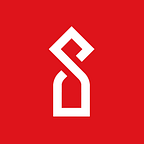Q1 : You are going to introduce a 2 token model. Is it similar to neo?
A1: There is only one INT token model, similar to NEO
Q2: How does one become a thearchy node? Is this something that anyone in the community can do if they have the technical/computational/storage/bandwidth ability?
A2: The precondition for becoming a thearchy node is that companies, institutions, or organizations are interested in using blockchain technology to address IoT application industry pain points, and reduce conflicts and high costs of information interaction and trade among companies. Therefore, such enterprises, or organizations will take the cost of technology, computing power, storage and bandwidth, and will also need to hold a considerable amount of INT Token granted as an incentive by POW for miner node. Certainly, INT team will compensate the enterprises or organizations by tokens based on holdings.
Q3: Have you determined the method of polling for thearchy nodes? Is it going to be by staking a certain amount of INT?
A3: At present, polling the thearchy node is a necessary and appropriate part in the INT consensus mechanism. The number of INT tokens held by the thearchy node is a prerequisite for the activation of the stimulus layer.
Q4: What is the definition of ’n’ and why must there be 2n+1 nodes?
A4: The total number should not be too large, generally it will not exceed 30. For the reasons why it must be odd, it is to prevent the fork, and each chain has 50% of the nodes. In this case, the speed of two blocks is same, and will not be merged.
Q5: My understanding of a genesis block is that it happens once at the beginning of the blockchain. That being said, it goes on to talk about voting to add new nodes or kick old or malicious nodes out. Is the genesis block updated or is it overwritten by a new ‘node list’ block? How often would voting take place?
A5: The initial node is written in the Genesis block. The subsequent node changes have the special logic of registration and cancellation. As for how often a vote is cast, it is currently scheduled once a year.
Q6: How would this be used to determine the availability of a new thearchy node participant? Why would there be n+1 thearchies on the chain? Are these thearchy block signatures?
A6: The new node will be generated by election. At the same time, there will be a design similar to the Magna Carta as a precondition. As for the charter, it will be decided according to the election by all the meta nodes and community members will vote. In this case, n+1 means that a transaction can be confirmed only when n+1 of 2n+1 has confirmed.
Q7: What is an asset? Is INT token/share an asset? Where does the INT token/share exist in this archetecture? Is it part of the thearchy chain?
A7: The linked data on the chain and under the chain are assets, and the INT token is just a quantified target of these assets. The INT token is the incentive mechanism for this architecture to operate, and the driving force for the interaction of data and information. It is a necessary indicator for a node to become a “thearchy” node and a part of thearchy chain.
Q8: Are these only going to be used to support transaction types in a rigid, hard coded and unchanging framework, or are they going to be open and programmable by users like Ethereum? Would they be global contracts existing on the Thearchy chain or only allowed on subchains?
A8: INT’s smart contracts fall somewhere between an invariant framework and an open framework. They can adjust key parameters, functions, and call some third-party tool interfaces according to the industry properties of IoT. Smart contracts only have industry attributes and are not related to territory. Therefore, their scope of application is limited to the sub-chain.
